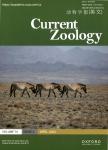Does disruptive camouflage conceal edges and features?
破坏性伪装掩盖边缘和功能吗?作者机构:Department of Biology Carleton University Ottawa K1S 5B6 Canada
出 版 物:《Current Zoology》 (动物学报(英文版))
年 卷 期:2015年第61卷第4期
页 面:708-717页
核心收录:
学科分类:0710[理学-生物学] 08[工学] 0839[工学-网络空间安全] 080203[工学-机械设计及理论] 0802[工学-机械工程] 081201[工学-计算机系统结构] 0812[工学-计算机科学与技术(可授工学、理学学位)]
主 题:Antipredator Background matching Contour Crypsis Camouflage Disruptive coloration Edge detection Objectrecognition
摘 要:Camouflage is ubiquitous in the natural world and benefits both predators and prey. Amongst the range of conceal- ment strategies, disruptive coloration is thought to visually fragment an animal's' outline, thereby reducing its rate of discovery. Here, I propose two non-mutually exclusive hypotheses for how disruptive camouflage functions, and describe the visual me- chanisms that might underlie them. (1) The local edge disruption hypothesis states that camouflage is achieved by breaking up edge information. (2) The global feature disruption hypothesis states camouflage is achieved by breaking up the characteristic features of an animal (e.g., overall shape or facial features). Research clearly shows that putatively disruptive edge markings do increase concealment; however, few tests have been undertaken to determine whether this survival advantage is attributable to the distortion of features, so the global feature disruption hypothesis is under studied. In this review the evidence for global feature disruption is evaluated. Further, I address if object recognition processing provides a feasible mechanism for animals' features to influence concealment. This review concludes that additional studies are needed to test if disruptive camouflage operates through the global feature disruption and proposes future research directions [Current Zoology 61 (4): 708-717, 2015].



